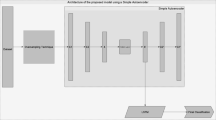Abstract
Fraud activity is a major concern in the telecommunication business domain. Thus, it’s very important to analyze the huge amount of data available in the network in order to detect early potential fraud behaviors and take countermeasures accordingly. In this paper, we used a novel approach using deep learning techniques to analyze datasets from a real mobile communication career and to extract and analyze features from labeled/unlabeled data. Our dataset was extracted from the business support system (BSS) containing 2.5 million call details records (CDR) of active subscribers. The proposed method integrates deep learning techniques with Apache Spark framework for parallel training execution. We found that our approach performed better than traditional machine learning with an F1 score of 91% and enhance the training speed of our deep learning model significantly when using the spark platform. Thus, the use of this proposed model can remarkably decrease the cost related to the unauthorized use of telecommunication services.
Access this chapter
Tax calculation will be finalised at checkout
Purchases are for personal use only
Similar content being viewed by others
References
Wei W, Li J, Cao L, Ou Y, Chen J (2013) Effective detection of sophisticated online banking fraud on extremely imbalanced data. World Wide Web 16:449–475
Sahin Y, Bulkan S, Duman E (2013) A cost-sensitive decision tree approach for fraud detection. Expert Syst Appl 40(15):5916–5923
Volinsky C (2014) Telecommunications fraud detection, using social networks for. Encyclopedia of Social Network Analysis and Mining. Springer, New York, pp 2107–2111
Chang YC et al (2017) Mining the networks of telecommunication fraud groups using social network analysis
Hilas CS, Mastorocostas PA, Rekanos IT (2015) Clustering of telecommunications user profiles for fraud detection and security enhancement in large corporate networks: a case study. Appl Math Inf Sci 9(4):1709
Murynets I et al (2014) Analysis and detection of SIMbox fraud in mobility networks. INFOCOM, 2014 Proceedings IEEE. IEEE
Olszewski D (2014) Fraud detection using self-organizing map visualizing the user profiles. Knowl-Based Syst 70:324–334
Akoglu L, Christos F (2013) Anomaly, event, and fraud detection in large network datasets. In: Proceedings of the sixth ACM international conference on Web search and data mining. ACM
Sharma A, Panigrahi PK (2013) A review of financial accounting fraud detection based on data mining techniques. arXiv preprint arXiv:1309.3944
Zaharia M, Chowdhury M, Franklin MJ, Shenker S, Stoica I (2010) Spark: cluster computing with working sets. In: USENIX conference on hot topics in cloud computing, pp 10–10
Kaiming H et al (2016) Deep residual learning for image recognition. In: Proceedings of the IEEE conference on computer vision and pattern recognition
Mikolov T et al (2013) Distributed representations of words and phrases and their compositionality. Advances in neural information processing systems
Shaoqing R et al (2015) Faster R-CNN: towards real-time object detection with region proposal networks. Advances in neural information processing systems
Hinton GE, Ruslan RS (2006) Reducing the dimensionality of data with neural networks. Science 313(5786):504–507
Spark A (2016) Apache spark: lightning-fast cluster computing. http://spark.apache.org
Chouiekh A, Haj EHIE (2018) ConvNets for fraud detection analysis. Procedia Computer Science 127:133–138
Wu X, Zhu X, Wu GQ, Ding W (2014) Data mining with big data. IEEE Trans Knowl Data Eng 26(1):97–107
Bergstra J, Bengio Y (2012) Random search for hyperparameter optimization. J Mach Learn Res 281–305
Kaiming H et al (2015) Delving deep into rectifiers: surpassing humanlevel performance on imagenet classification. In: Proceedings of the IEEE international conference on computer vision
Chouiekh A (2017) Machine learning techniques applied to prepaid subscribers: case study on the telecom industry of Morocco. In: 2017 Intelligent Systems and Computer Vision (ISCV). IEEE
Author information
Authors and Affiliations
Editor information
Editors and Affiliations
Rights and permissions
Copyright information
© 2022 The Author(s), under exclusive license to Springer Nature Singapore Pte Ltd.
About this paper
Cite this paper
Chouiekh, A., Ibn El Haj, E. (2022). Towards Spark-Based Deep Learning Approach for Fraud Detection Analysis. In: Yang, XS., Sherratt, S., Dey, N., Joshi, A. (eds) Proceedings of Sixth International Congress on Information and Communication Technology. Lecture Notes in Networks and Systems, vol 216. Springer, Singapore. https://doi.org/10.1007/978-981-16-1781-2_2
Download citation
DOI: https://doi.org/10.1007/978-981-16-1781-2_2
Published:
Publisher Name: Springer, Singapore
Print ISBN: 978-981-16-1780-5
Online ISBN: 978-981-16-1781-2
eBook Packages: Intelligent Technologies and RoboticsIntelligent Technologies and Robotics (R0)




